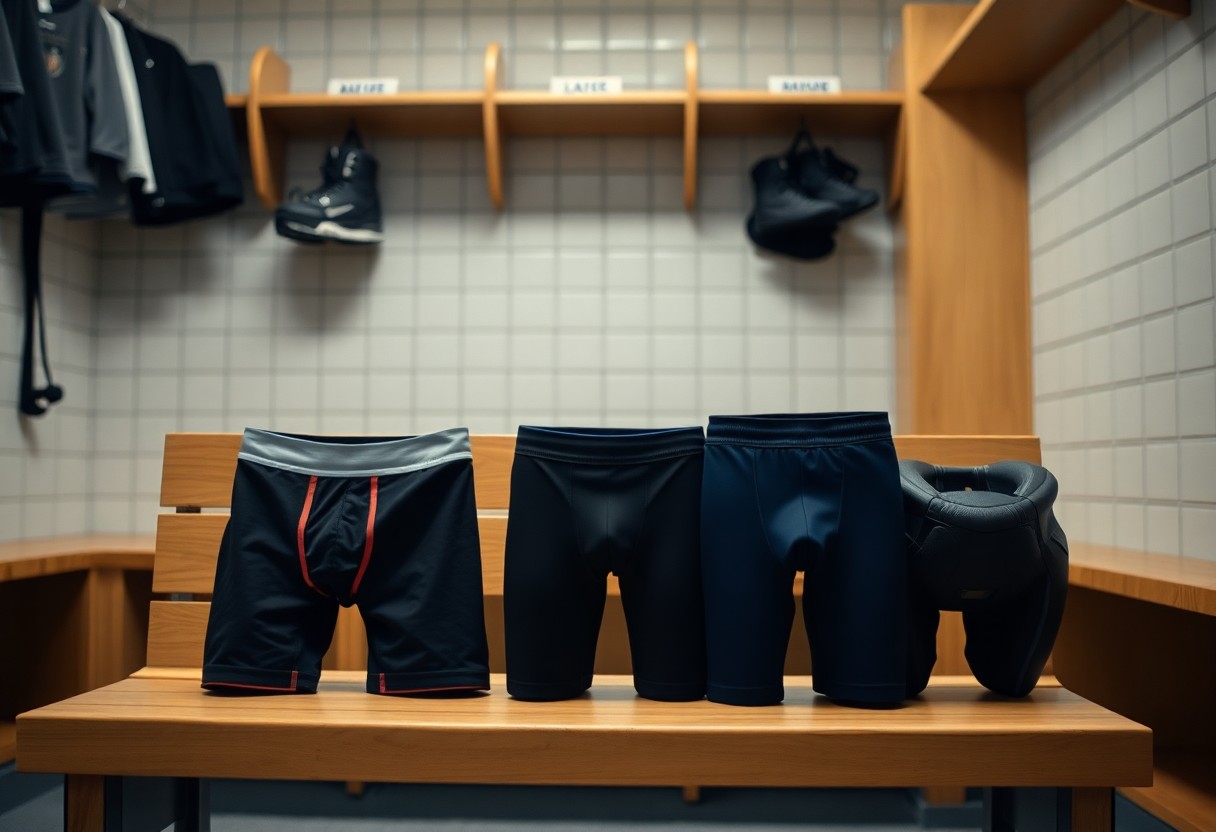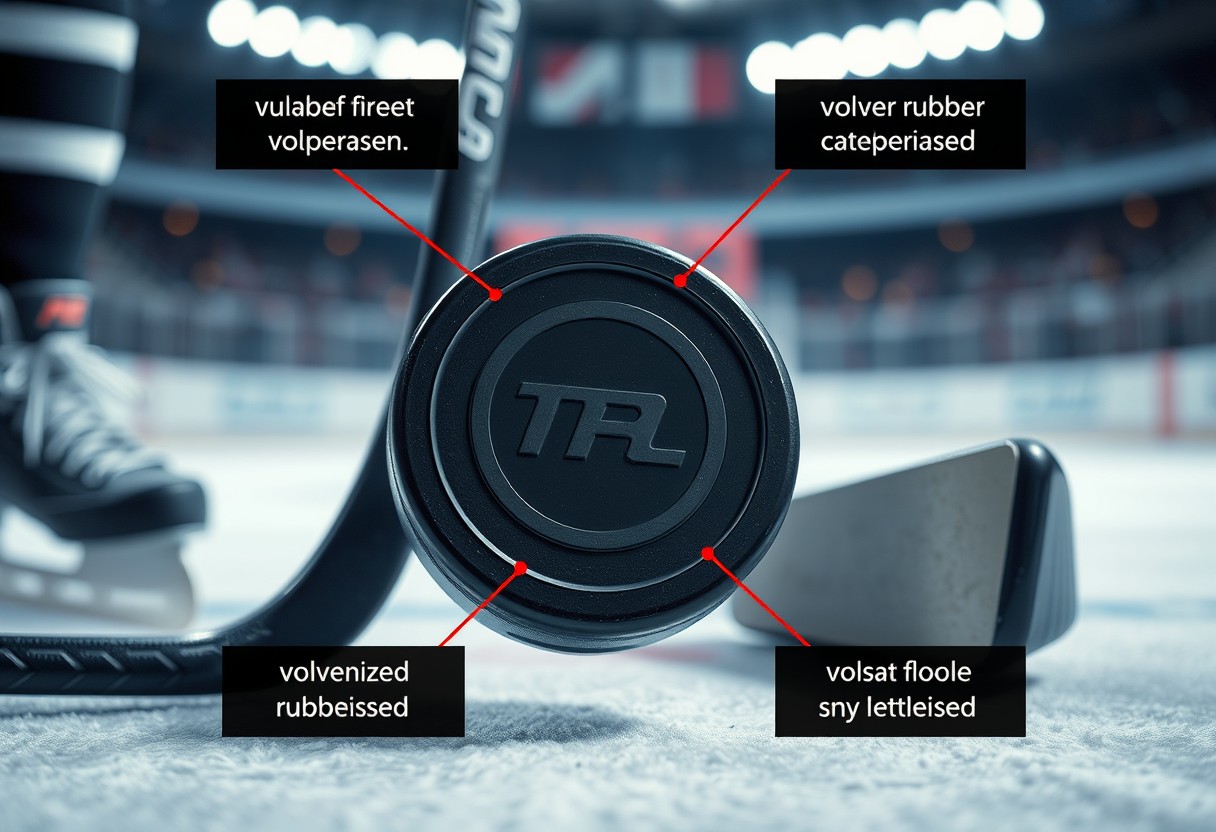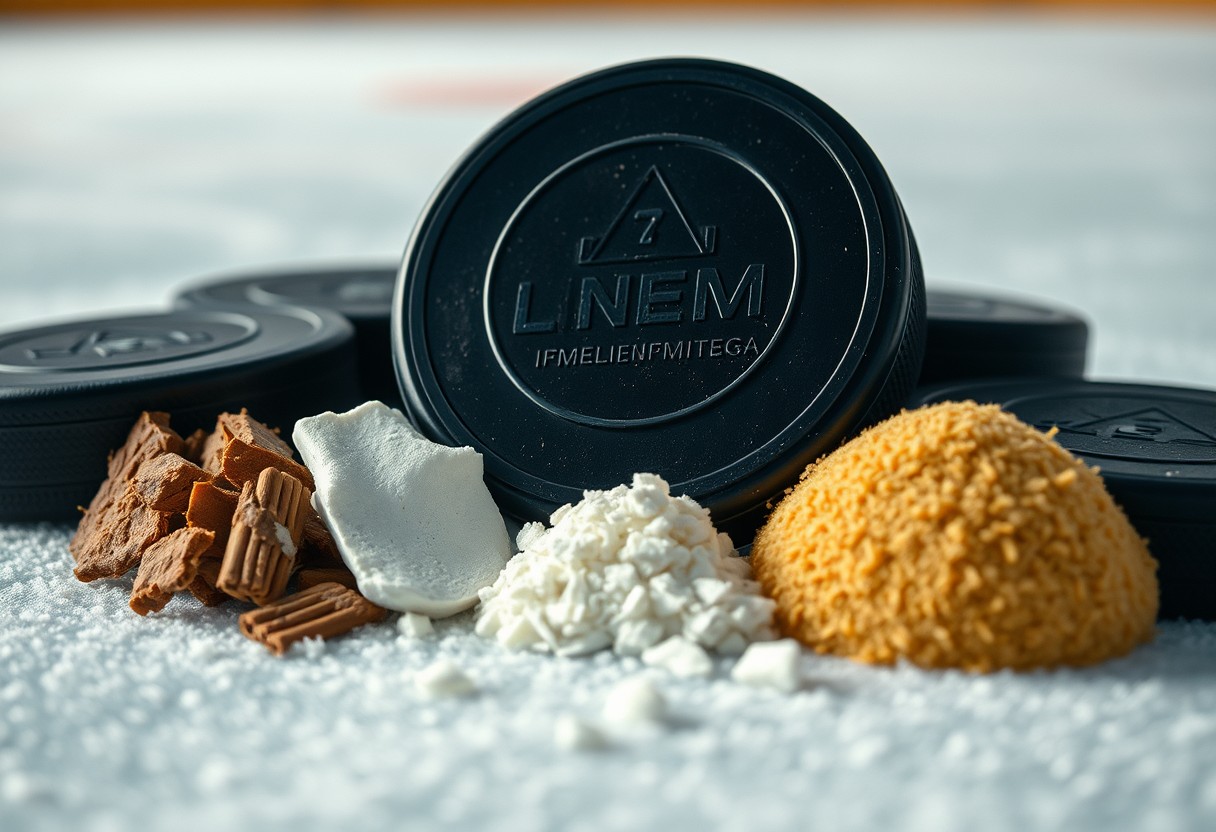Undergarments play a significant role in your overall comfort and performance on the ice. Choosing the right items to wear under your hockey pants can enhance your mobility, manage moisture, and protect you from potential injuries. In this post, you will learn about the best options for undergarments, including supportive base layers and materials that wick away sweat, ensuring you stay focused on the game. Let’s probe what you should consider wearing beneath your hockey gear for an optimal experience on the rink.

Importance of Proper Undergarments
To enhance your on-ice experience, wearing proper undergarments is vital. The right base layers can provide both comfort and protection, ensuring you focus on your game without distractions. Quality undergarments can prevent chafing and irritation, offering you a supportive foundation that holds up against the demands of hockey. Choosing the correct materials and fit is important for optimal performance and enjoyment on the rink.
Comfort and Mobility
An effective undergarment not only keeps you comfortable but also allows for a full range of motion. When you wear the right materials, you minimize resistance while skating and ensure that your movements are not hindered by bulkiness or poor fit. Consider moisture-wicking fabrics that move with your body, allowing you to execute your best plays without discomfort.
Temperature Regulation
Around the rink, temperature control is key to maintaining your peak performance. Wearing appropriate undergarments can significantly influence how cool or warm you feel during the game. Layering intelligently helps you adapt to various temperatures and can keep you focused and agile on the ice.
Temperature Regulation
| Material | Effect on Temperature |
| Polyester | Wicks moisture away from the skin, keeping you dry |
| Merino Wool | Regulates body heat while providing insulation |
| Nylon | Durable, quick-drying fabric that offers breathability |
In fact, selecting the right fabric goes beyond comfort; it can impact your performance. For instance, moisture-wicking materials help to keep sweat away from your skin, preventing that chilling feeling when your body cools down. Merino wool is another excellent choice for its natural insulating properties, making it ideal for varying rink conditions. By prioritizing temperature regulation in your undergarments, you enhance your ability to concentrate on your game, rather than on your comfort level.
Types of Undergarments for Hockey
One of the most important aspects of your hockey gear is the undergarment you choose to wear under your hockey pants. The right undergarments can greatly enhance your comfort and protection on the ice. Here’s a quick overview of your options:
| Compression Shorts | Moisture-wicking fabric that supports muscles. |
| Jockstraps | Provides imperative protection for sensitive areas. |
| Long Underwear | Great for insulation during colder games. |
| Boxer Briefs | Offers comfort and freedom of movement. |
| Performance Tights | Enhances circulation and keeps you dry. |
Thou should consider these various types of undergarments to find what suits your style and needs best.
Compression Shorts
Hockey players often opt for compression shorts as they provide muscle support, reduce fatigue, and offer a snug fit. These shorts are typically made from moisture-wicking materials designed to keep you dry and comfortable during intense games.
Protective Gear
With the physicality of ice hockey, wearing protective gear underneath your hockey pants is vital. This includes options like jockstraps and padded shorts, which can help shield you from potential impacts during play.
Considering your safety on the ice, investing in quality protective gear should be a top priority. Wearing a securely fitted jockstrap not only provides important protection for sensitive areas but also ensures you stay comfortable throughout the game. Padded shorts can absorb shocks from collisions, providing an extra layer of defense against bruises and injuries.
Materials to Consider
It is important to choose the right materials when selecting what to wear under your hockey pants, as they can greatly affect your comfort and performance on the ice. Look for options that will keep you dry, comfortable, and protected during your game or practice. Consider how these materials interact with each other and with your body to ensure you stay focused on your performance.
Moisture-Wicking Fabrics
An effective option for your undergarments is moisture-wicking fabrics. These materials are designed to pull sweat away from your skin and quickly evaporate it, keeping you dry and comfortable throughout your game. Look for synthetic fibers like polyester or nylon, which are known for their moisture-wicking properties and durability.
Breathable Options
At the same time, breathable options can enhance your overall comfort while playing. These fabrics allow for better airflow, helping to regulate your body temperature during intense activity. Choosing breathable materials can prevent overheating and ensure you remain focused on your game without feeling weighed down.
Fabrics like mesh or lightweight cotton blends can provide excellent breathability, allowing air to circulate while keeping you comfortable. Look for undergarments that feature a combination of moisture-wicking and breathable properties for the best of both worlds. You want materials that feel light against your skin, providing adequate coverage without restricting movement, allowing you to perform at your best on the ice.
Style and Fit
Now, when it comes to finding the right style and fit for what you wear under your hockey pants, comfort and performance should take the lead. You want to choose undergarments that allow for ease of movement while providing adequate protection. Look for options designed specifically for hockey, as these typically incorporate moisture-wicking materials and ergonomic designs that mimic your body’s movements, ensuring that you stay comfortable throughout the game.
Choosing the Right Size
Across various brands and styles, sizing can differ, making it vital to consult sizing charts specific to the product you are considering. Fit should be snug but not restrictive; you want your undergarments to stay in place without digging into your skin. A well-fitting base layer will enhance your overall performance by allowing for unrestricted movement as you skate and shoot.
Avoiding Chafing
Size can significantly impact your comfort on the ice, especially regarding chafing. Wearing undergarments that are either too tight or too loose can lead to friction, resulting in irritation and discomfort during your game.
And to avoid chafing, consider selecting moisture-wicking fabrics that also provide flat seams. This combination not only keeps you dry but also minimizes irritation points. Look for styles that feature longer lengths, such as compression shorts, which can offer additional coverage and stability, preventing material from bunching and rubbing against your skin as you move. Prioritize seamless designs when possible, as these can further reduce the risk of friction, allowing you to focus on the game rather than your discomfort.

Common Mistakes to Avoid
Unlike the common belief that any old athletic wear is sufficient, choosing the wrong materials or neglecting the importance of fit can lead to disappointment on the ice. You want to ensure comfort and performance, so being aware of these mistakes will help maximize your experience while playing hockey.
Wearing Cotton
Wearing cotton beneath your hockey pants is a common error that can lead to discomfort. Cotton absorbs moisture and can leave you feeling damp and cold, which is less than ideal during a game. Instead, opt for synthetic materials designed to wick away sweat, keeping you dry and warm while you skate.
Ignoring Layering
On the ice, temperatures can fluctuate, and neglecting to layer correctly can leave you feeling overexposed to the cold. Adding appropriate base layers beneath your hockey pants gives you extra insulation without sacrificing mobility.
Mistakes in layering often happen when players assume their hockey pants provide enough warmth alone. In actuality, layering helps regulate your body temperature, allowing for better performance and comfort throughout the game. Consider breathable, moisture-wicking fabrics as your first layer to ensure you stay dry, followed by thermal materials if you need added warmth. This approach enables you to adapt to varying conditions during play, thus enhancing your overall experience on the ice.
Maintenance and Care
All hockey gear, including your hockey pants, requires proper maintenance and care to ensure optimal performance and longevity. Regular cleaning and following specific care guidelines can keep your gear fresh, hygienic, and ready for play. By taking proactive steps, you can extend the life of your hockey pants and enhance your overall experience on the ice.
Cleaning Guidelines
Any hockey gear accumulates sweat, dirt, and odors over time, making it crucial to clean your hockey pants regularly. Wash them in cold water using a gentle cycle and avoid bleach. If possible, air dry your pants rather than using a dryer to prevent damage.
Longevity Tips
Before investing in hockey pants, consider the following longevity tips to keep them in top shape:
- Store your pants in a cool, dry place after use.
- Avoid leaving them in your hockey bag for extended periods.
- Inspect for wear and tear after each game.
The effort you put into caring for your hockey pants will pay off in durability and comfort during your games.
Another important aspect of longevity involves being mindful of how you use your gear:
- Avoid excessive exposure to extreme temperatures.
- Regularly check your pants for loose stitches or other issues.
- Use a mesh bag when washing to protect them from snags.
The more attention you give to the care of your hockey pants, the longer they will serve you well on the ice.
Final Words
As a reminder, choosing the right gear to wear under your hockey pants enhances both comfort and performance on the rink. Opt for moisture-wicking base layers to keep you dry, along with protective cups for safety. Fitted shorts or compression wear can offer additional support and minimize chafing during movement. By selecting the appropriate attire, you can ensure a more enjoyable and effective game experience while protecting yourself from abrasions and impact.




